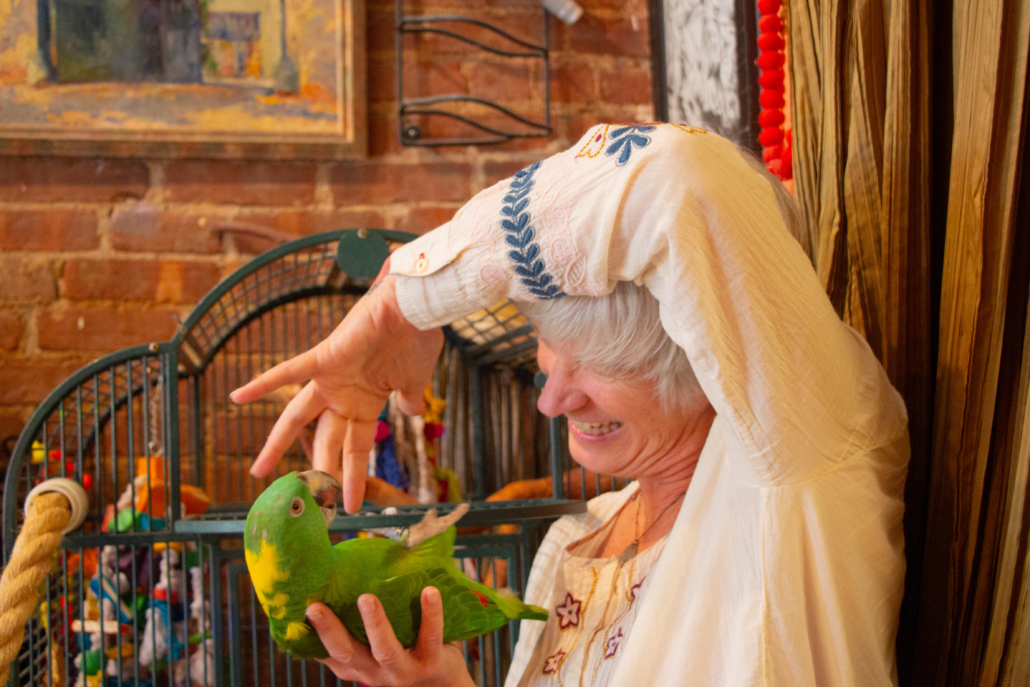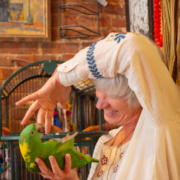The Cages We Live In

Like Noah’s Arch, I’ve always found it helpful to care for animals in pairs. Presently, I care for two four-leggeds, two winged-ones, two+ finned-ones. While my adopted menagerie of cats, birds and fish highlight differences between species, the pairs offer comradery within species.
Creating different environments for different animals to thrive has been my task as an animal rescue activist. But only recently have I considered two-leggeds as members of the menagerie. I too began to want comradery.
The winged-ones have been the biggest challenge since adopting a very lovable two-legged man into my world. Each bird had chosen me as their mate, which created rivalry between them, but they united in their jealousy toward my man.
I began to question if I should keep the newest member of my bird-duo. She was aggressive toward my longstanding bird-friend of 25+ years, and after 5-years it’s clear they’re not going to be peaceful comrades.
Every time I serve dinner to my man, she squaks to be included in our feast. She ignites the other bird’s shared, but contained, agitation, and they blast us with siren-like screeching focused on our food and ignoring their own throughout dinner.
This atmosphere isn’t exactly a thriving environment for my two-legged relationship.
But I took this bird on, with all her foibles, when I adopted her. Even if I found another good home for her, my commitment to her would be breeched. No matter how I looked at it, judgment was all I could feel… toward me, toward her, toward my man for being the agitator.
Then I realized, the feeling I get when my bird acts out was familiar! I was being triggered into the, “she doesn’t care about me,” punishing hopelessness, that I’ve always felt with my mother.
No wonder I couldn’t think straight!
After a few deep breaths, I could see that feeding her off my plate was teaching her that screeching reaped reward. To train her to stay quiet, take away the stimuli—cover her cage when serving dinner and save her some for after dinner as a reward for staying quiet.
I’m happy to report, it’s worked! But I still struggled?
Then I realized, the guilt I’ve carried for caging my birds was a part of this saga. They’re born in captivity and would die in the wild, but they’re built to fly free. My mind understands the need for the cage, but my body cringes.
Covering the cage exaggerated this internal argument. The punishing screech was easier for me to bear than covering her, until I had yet another realization. Considering my needs was as important as considering hers.
The root to transforming the relationship with my mom was revealed through my relationship with my bird.
After another few breaths, I could see that the cage and its cover aren’t punishing, they’re used to protect and shield them from threat and excess stimuli. Not so different from my apartment and its curtains.
The cages we live in are not made of metal, they’re made of hardened judgments that allow us no space for process, growth or learning. And the way out, as I have illustrated in this story, is to learn to love.
My menagerie and I are intact and learning to love each other. And my man continues to agitate the love-fest. Now, I can use what I’ve learned with my mom.


